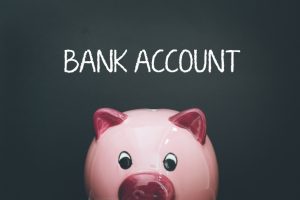Creating a budget is one of the most important steps in managing your money effectively. It allows you to take full control of your finances, optimize your spending, and work toward long-term stability. With a clear budget, you gain insight into where your money is going—making it easier to make intentional, informed decisions.
By following the right budgeting tips, you can build a reliable financial plan that helps you save for the future, avoid unnecessary debt, and reduce financial stress. Budgeting isn’t about restriction—it’s about making smart money choices that align with your priorities and goals.
Key Takeaways
- Understand the importance of budgeting for financial stability.
- Learn how to track your monthly expenses effectively.
- Discover ways to create a personalized financial plan.
- Identify areas to cut back on unnecessary expenses.
- Develop strategies to achieve your long-term financial goals.
Understanding Your Current Financial Situation

Before you can create an effective budget, you need to understand your current financial position. Having a clear and accurate view of your finances is the foundation of smart money management.
Tracking Your Income Sources
You may receive income from multiple sources, such as a full-time job, part-time work, freelance projects, or government support. Track each of these income streams to calculate your total monthly earnings. You can use a spreadsheet, a budgeting app, or even a notebook—what matters is staying consistent.
Identifying All Monthly Expenses
Next, make a comprehensive list of your monthly expenses. Include fixed costs like rent, utilities, and loan payments, as well as variable costs like groceries, transportation, and entertainment. Don’t forget smaller, recurring charges like subscriptions—they add up quickly. Categorizing your expenses will help you understand where your money goes and identify areas for improvement.
Analyzing Your Spending Patterns
Once you’ve tracked your income and expenses, review your spending behavior. One helpful method is the 50/30/20 rule: allocate 50% of your income to needs, 30% to wants, and 20% to savings and debt repayment. This simple structure provides balance and encourages better decision-making.
By following these budgeting tips and gaining a solid understanding of your income, expenses, and spending patterns, you’ll be well prepared to build a realistic budget that supports your financial goals.
Setting Clear Financial Goals
Setting financial goals gives your money a purpose. When you know what you’re working toward, it becomes easier to build a budget that aligns with your priorities. With well-defined goals, your spending and saving habits become more intentional—an essential element of any effective financial plan. These budgeting tips help keep you focused and motivated.
Short-term vs. Long-term Goals
Financial goals fall into two main categories: short-term and long-term. Short-term goals typically span up to a year and may include building an emergency fund, paying off small debts, or saving for a vacation. Long-term goals, on the other hand, take more time to achieve—such as saving for a home, funding higher education, or preparing for retirement.
Understanding the difference between these two types helps you allocate resources wisely and balance immediate needs with future ambitions.
Making Your Goals SMART
A practical way to strengthen your financial goals is by using the SMART framework—Specific, Measurable, Achievable, Relevant, and Time-bound. This transforms vague intentions into concrete targets. For instance, instead of saying “I want to save money,” say “I will save €1,000 over six months by putting aside €167 each month.”
This clarity makes your goals more attainable and gives you a clear roadmap to follow—one of the most powerful budgeting tips available.
Prioritizing Your Financial Objectives
Once your goals are set, it’s crucial to prioritize them based on urgency and impact. Some goals might require immediate attention—like paying off high-interest debt—while others can be addressed gradually. Adjusting your budget to reflect these priorities ensures that you’re making deliberate choices about where your money goes.
By aligning your financial goals with a structured plan, you’ll be better prepared to stay disciplined and see real progress toward the future you envision.
Essential Budgeting Tips for Financial Success
Effective budgeting is essential for achieving financial stability, especially in regions with a high cost of living. To manage your money well, it’s important to understand your local economic conditions, prepare for seasonal expenses, and be aware of relevant tax implications. These budgeting tips can help you stay ahead and maintain control of your finances.
Adapting to a High Cost of Living
In areas where the cost of living is higher—such as large cities or capital regions—adjusting your budget becomes even more important. Prioritize essential expenses like rent, utilities, groceries, and transportation. Look for practical ways to cut back, such as cooking at home, buying in bulk, or canceling subscriptions you don’t use regularly.
Smart planning allows you to enjoy your lifestyle without overspending.
Seasonal Expense Planning

Seasonal changes can have a significant impact on your budget. Heating costs may rise in winter, while vacations and social events may increase spending in summer. Anticipating these fluctuations and creating a seasonal budget helps you manage expenses without disrupting your overall financial plan.
Set aside funds during low-spending months to cover high-cost periods—one of the simplest yet most powerful budgeting tips for year-round stability.
Accounting for Tax Considerations
Understanding your region’s tax system is crucial for accurate budgeting. Be aware of income taxes, consumption taxes (like VAT), and potential deductions you may qualify for—especially if you work remotely or run a side business.
Use government or tax authority resources to stay informed, and consider speaking with a tax advisor if your situation is more complex.
| Expense Category | Average Monthly Cost (€) | Tips for Reduction |
|---|---|---|
| Groceries | 300–500 | Plan meals, buy in bulk, use discount stores |
| Utilities | 100–200 | Reduce energy use, install energy-efficient appliances |
| Transportation | 80–150 | Use public transport, cycle or walk for short distances |
By understanding the cost of living in your area, preparing for seasonal changes, and staying informed about tax implications, you’ll be able to build a realistic and resilient budget—one that supports both your daily needs and your long-term goals.
Choosing the Right Budgeting Method
Effective budgeting begins with choosing a method that aligns with your personal financial goals and habits. Different approaches work better for different people, depending on income, lifestyle, and discipline. Exploring these popular techniques can help you find the one that suits you best—one of the most valuable budgeting tips for long-term success.
Zero-Based Budgeting Approach
Zero-based budgeting involves assigning every unit of your income to a specific purpose—whether it’s an expense, a savings goal, or debt repayment. The goal is for your income minus expenses to equal zero, with every dollar or euro accounted for.
By giving each amount a role, you eliminate aimless spending and gain total control over your finances. This method is especially effective for people who want detailed insight into their monthly cash flow.
50/30/20 Rule Application
The 50/30/20 rule offers a straightforward and balanced approach to managing your money. It recommends allocating:
- 50% of your income to essential needs (rent, utilities, groceries)
- 30% to discretionary spending (entertainment, dining out)
- 20% to savings and debt repayment
This structure encourages responsible financial behavior while still allowing room for enjoyment. It’s a great method for those seeking simplicity and flexibility.
Envelope System Implementation
The envelope system is a hands-on, visual budgeting method. You divide your spending categories—like groceries, transport, and entertainment—and place a set amount of cash for each into labeled envelopes.
Once an envelope is empty, you stop spending in that category until the next budgeting cycle. This method builds strong awareness of your spending habits and reinforces discipline.
Pay Yourself First Method
The pay yourself first strategy focuses on prioritizing your financial future. As soon as you receive your income, you immediately set aside a fixed portion for savings or debt repayment—before spending on anything else.
This method ensures consistent progress toward your long-term goals, such as building an emergency fund, investing, or eliminating debt. It’s one of the most effective budgeting tips for building wealth over time.
By exploring and testing these budgeting methods, you can discover which one best fits your lifestyle. Choosing the right strategy empowers you to manage your money with confidence and move steadily toward financial security.
Creating Your Monthly Budget Plan
Start by thinking clearly about your financial goals. Then, build a monthly budget plan that organizes your income and expenses into clear categories. This step is essential for managing your money effectively and progressing toward long-term financial stability. These budgeting tips help you create a structure that works for your lifestyle.
Categorizing Expenses Effectively
Begin by grouping your expenses into categories. Common groups include housing, utilities, groceries, transportation, and entertainment. Categorizing helps you understand where your money goes—and where adjustments can be made.
Start with your fixed costs, such as rent or mortgage payments, utility bills, and debt repayments. Then move on to variable expenses, including groceries, dining out, and personal spending. This process highlights opportunities to cut back and make smarter spending decisions.
Allocating Funds to Each Category

Once your expenses are categorized, assign specific amounts to each one. Cover essential categories first—like housing, bills, and groceries—before allocating funds to non-essentials like hobbies or entertainment.
Use the 50/30/20 rule as a flexible guide:
- 50% for needs
- 30% for wants
- 20% for savings and debt repayment
Adjust these percentages to fit your personal income, goals, and financial responsibilities. The key is to be intentional with every part of your income—one of the most valuable budgeting tips for consistency.
Building in Emergency Funds
An emergency fund is a vital part of any strong budget. It protects you from unexpected costs like medical bills, car repairs, or job loss—without having to rely on credit or loans.
Aim to save 3 to 6 months’ worth of living expenses. Start small if needed—every bit adds up. Keep this fund in a separate, easy-to-access savings account to ensure it’s available when you need it.
| Category | Allocated Amount | Percentage of Income |
|---|---|---|
| Housing | €800 | 30% |
| Utilities | €150 | 5% |
| Groceries | €300 | 10% |
| Transportation | €200 | 7% |
| Entertainment | €200 | 7% |
| Savings | €500 | 20% |
Following a structured monthly plan helps you stay disciplined, make adjustments when needed, and stay on track to reach your goals.
Digital Tools and Apps for Budget Management
Managing your money is much easier with the help of digital tools and apps. These platforms can track your spending, categorize your expenses, and provide insights into your financial habits. With the right tools, you can make smarter financial decisions and implement effective budgeting tips into your daily routine.
Banking Apps with Budgeting Features
Many banks now offer mobile apps that include built-in budgeting features. These apps allow you to monitor your income, track expenses by category, and even set monthly spending goals. Some also offer real-time alerts when you’re approaching your budget limits, helping you stay disciplined.
Banking apps provide a clear snapshot of your finances and are especially useful if you prefer to manage everything in one place—securely and conveniently.
International Budgeting Tools
In addition to local banking options, there are many global budgeting apps available that work across regions. Popular tools like Mint, YNAB (You Need a Budget), and Personal Capital offer features such as automatic transaction tracking, goal setting, and bill reminders.
These platforms are ideal for those who want a more comprehensive view of their finances, including savings and investments, all in one dashboard.
Spreadsheet Templates for DIY Budgeters
If you prefer a more hands-on approach, spreadsheet templates are a great solution. Programs like Microsoft Excel and Google Sheets offer customizable templates for monthly budgets, debt payoff plans, and expense tracking.
These tools are perfect for those who want full control and flexibility over their budgeting process. Plus, they’re free to use and easily tailored to your specific financial goals.
| Tool/App | Key Features | Accessibility |
|---|---|---|
| Banking App | Expense tracking, budget goal setting | Region-specific |
| Mint | Automated expense tracking, bill reminders | Internationally available |
| Google Sheets Budget Template | Customizable budgeting, financial data analysis | Globally accessible |
Using digital tools is one of the most practical budgeting tips for building strong financial habits and maintaining a well-structured monthly plan.
Strategies for Reducing Monthly Expenses
Living in high-cost regions can be expensive, but with smart adjustments to your spending and lifestyle, you can significantly reduce your monthly expenses. These small changes not only help you save more but also bring you closer to your financial goals. Applying these practical budgeting tips will strengthen your overall money management strategy.
Optimizing Housing Costs
Housing is often one of the biggest monthly expenses. To lower this cost, consider sharing accommodation with roommates to split rent and utilities. Another option is to look for places outside city centers, where rental prices tend to be more affordable.
You can also try negotiating your rent, especially if you’re committing to a long-term lease. Many landlords may be open to lowering the price for reliable tenants who stay longer.
Saving on Utilities and Energy
Utility bills can be reduced by making simple changes in how you consume energy. Turn off lights and electronics when not in use, use energy-efficient appliances, and set your thermostat a few degrees lower or higher depending on the season.
Also, compare utility providers when possible to ensure you’re getting the best rates for your area. These budgeting tips can lead to real savings over time.
Grocery Shopping on a Budget
Groceries are another major area where expenses can add up quickly. Plan your meals in advance, stick to a shopping list, and take advantage of discounts, loyalty programs, or cashback apps. Buying in bulk, choosing store-brand items, and cooking at home instead of eating out can help stretch your food budget significantly.
Transportation Cost Management
Transportation costs can vary widely depending on your lifestyle. Whenever possible, use public transport, walk, or cycle to your destination. These options are not only cheaper but also healthier and more sustainable.
If you own a car, consider carpooling, joining a car-sharing program, or optimizing your trips to reduce fuel use. Keeping your vehicle in good condition through regular maintenance also improves fuel efficiency and extends its lifespan.
By applying these budgeting tips across different expense categories, you can gain better control over your finances and increase your ability to save.
Handling Irregular Expenses and Windfalls

Keeping your budget balanced means planning not just for regular expenses but also for the irregular ones that can catch you off guard. Unexpected costs like annual bills, holiday spending, or special events can disrupt your finances if you’re not prepared. On the other hand, windfalls—such as tax refunds or work bonuses—are great opportunities to strengthen your financial position. These budgeting tips help you manage both challenges and opportunities more effectively.
Planning for Annual and Quarterly Bills
Irregular bills—like insurance premiums or property taxes—often come once or twice a year, making them harder to handle if you don’t plan ahead. One smart strategy is to break down the total cost into monthly portions and save that amount in a separate account.
For example, if your annual insurance premium is $1,200, you can set aside $100 each month. This way, when the bill arrives, the money is already there—no stress or last-minute scrambles.
Managing Holiday and Celebration Expenses
Holidays, birthdays, and special occasions can add up quickly. To avoid dipping into credit cards or emergency savings, create a dedicated fund for these events. Estimate your total annual spending for gifts, travel, and festivities, then divide that amount by 12 to save gradually.
This not only eases the burden during high-spending seasons but also allows you to enjoy the celebrations guilt-free—one of the most underrated budgeting tips for long-term peace of mind.
Smart Allocation of Tax Refunds and Bonuses
Unexpected income from tax refunds, bonuses, or even gifts should be used wisely. Rather than spending it impulsively, consider applying it to high-impact financial goals—such as paying down debt, boosting your emergency fund, or investing in your future.
Treating windfalls as a chance to get ahead rather than splurge can fast-track your financial progress and reinforce your budgeting discipline.
| Expense Type | Annual Cost | Monthly Savings Needed |
|---|---|---|
| Insurance Premium | $1,200 | $100 |
| Property Taxes | $2,400 | $200 |
| Holiday Expenses | $600 | $50 |
Planning for irregular expenses and using windfalls wisely ensures your budget stays stable—no matter what surprises come your way.
Overcoming Common Budgeting Challenges
Creating a budget is just the beginning—sticking to it and adjusting when life changes is where the real work begins. Along the way, you’ll likely face several challenges that test your commitment and discipline. With the right budgeting tips, you can overcome these obstacles and stay on track toward your financial goals.
Dealing with Budget Shortfalls
A budget shortfall occurs when your expenses exceed your income. To fix this imbalance, you need to either cut costs or boost your income. Here are a few strategies that can help:
- Cut back on discretionary spending, like dining out or entertainment.
- Negotiate with service providers to lower bills for internet, insurance, or subscriptions.
- Explore additional income sources, such as part-time work or selling unused items.
| Strategy | Description | Potential Savings |
|---|---|---|
| Reduce discretionary spending | Cut back on non-essential expenses | €100–€300 per month |
| Negotiate bills | Lower rates with service providers | €50–€150 per month |
| Explore additional income | Part-time job or selling items | €200–€500 per month |
Even small adjustments can make a significant difference when applied consistently.
Adjusting Your Budget When Life Changes
Life is full of transitions, and your budget should be flexible enough to adapt. Whether you start a new job, experience a change in family structure, or deal with a medical issue, it’s essential to review and update your budget accordingly.
Review your budget:
- After a significant income change
- When your family size or status changes
- Following any major health or insurance adjustment
Keeping your budget aligned with your current reality ensures it stays useful and realistic.
Staying Motivated Through Budgeting Fatigue
It’s normal to feel discouraged when budgeting feels repetitive or when progress seems slow. To stay motivated:
- Celebrate small wins, like paying off a debt or reaching a savings milestone
- Find a budgeting partner for encouragement and accountability
- Use budgeting apps to track your progress visually
- Reward yourself in modest, budget-friendly ways when you hit key targets
By addressing these common budgeting challenges head-on, you’ll build financial resilience and stay committed to long-term success. These budgeting tips will help you not just survive but thrive on your path to financial freedom.
Conclusion: Building Financial Security Through Consistent Budgeting

You’ve taken the essential steps to take control of your finances—understanding your income and spending, setting meaningful goals, and choosing the budgeting method that suits you best. Now, the key is consistency. Maintaining your budget over time is what truly leads to lasting financial security.
Sticking to your plan, tracking your spending, and making thoughtful adjustments allows you to stay prepared for unexpected costs and make more confident financial decisions. These daily habits, reinforced with proven budgeting tips, help you align your money with your values and priorities.
In regions with higher living costs or fluctuating expenses, a steady, well-structured budget becomes even more important. It gives you the tools to spend intentionally, save for the future, and build a solid financial foundation.
Keep moving forward on your financial journey. Remember: financial security isn’t achieved overnight—it’s built through consistency, awareness, and smart money choices. With a clear plan and ongoing commitment, you’re well on your way to lasting peace of mind.









